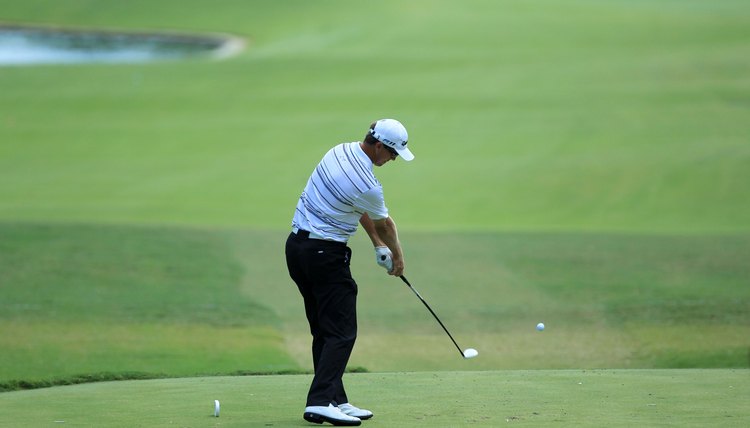While all players seek to avoid uncontrollable hook shots that curve to the left, most weekend players struggle to hit shots that draw even a little bit.
The problem for many of them is as simple as misunderstanding why the golf ball behaves as it does. A hook – or more precisely, a draw – isn't that difficult to hit once you know the basic keys.
Step 1
Start on the left side of the tee box. Many players instinctively move to the right side because they want the ball to start to the right.
But if you tee up on the right side, you'll have to start the ball out over the right rough and, especially if there are trees, that's mentally intimidating. Many players will try to avoid the right rough and instinctively hit the ball left, away from the rough, causing them to miss the fairway to the left with a pull hook. By teeing up on the left side, you have plenty of fairway to the right to start your draw and won't be "spooked" so easily.
Step 2
Pick a target in the center of the fairway.
Until you learn how much you will draw the ball, this is the safest approach.
If you tee up on the left side of the tee box and aim down the middle, you're already aimed slightly to the right. That's exactly what you want.
Step 3
Set up as if you were going to hit a shot straight at your target. This may sound strange, but it makes aiming much easier. When you set up to hit your hook, your feet will appear to be aimed wrong. If you aim straight at your target first, the stance change will make more sense.
Step 4
Move your feet slightly toward the target so the ball ends up farther back in your stance. This isn't a big move – the ball only needs to be a couple of inches closer to your right foot than normal.
Step 5
Pull your right foot straight back from the target line. You only need to move it back 3 or 4 inches. This creates a closed stance. (Remember that a hook is caused by a club path starting to the right – a closed stance – and the clubface pointing to the left of that path – a closed face. Similarly, a slice is caused by an open stance and an open clubface.)
The combination of moving the ball and your foot back does two things. First, it aims your feet more to the right of your target, so the ball can hook back toward it. Secondly, it moves the ball slightly away from your body and flattens your swing. That helps you hit the ball with an in-to-out swing that also will help the ball hook slightly.
Step 6
Keep your upper arms close to your chest. If your triceps rest lightly against your chest throughout your swing, this helps flatten your swing even more.
Step 7
Turn your whole body on the downswing rather than just sliding your hips forward.
If you slide your hips toward the target, you'll tend to lean backward and leave the clubface open – you don't want that.
(With a closed stance and an open clubface, the club's path will start the ball to the right and the open clubface will send it even farther right – a push-slice.) It takes a little more work to get your belly button facing the target when you're in a closed stance, so concentrate on getting your shoulders and hips turned through the shot. The ball should start out slightly to the right of your target, then draw back toward it.

